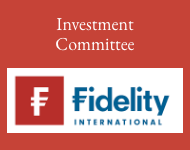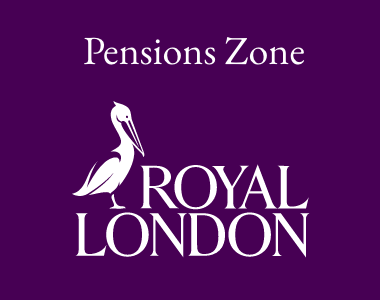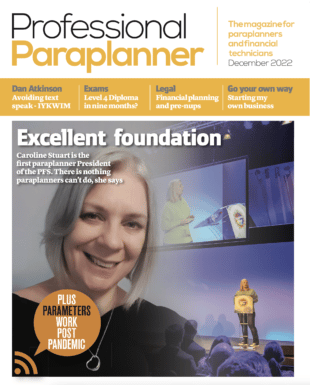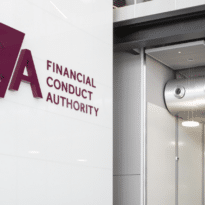What should financial advice firms do if they suspect an investment a client wishes to invest in may be a scam? Steve Bailey, director ATEB Consulting, provides a view using a case study example.
Scams are a scourge of the modern age. Of course, scammers and scams have probably existed for as long as homo sapiens. But scams do seem to be increasingly prevalent in the digital world, perhaps not a great surprise given that modern technology makes everything quicker and easier.
Scammers can contact potential victims through mass emails and telephone calls at a rate that would have been impossible a couple of decades or so ago.
Financial firms can be unwittingly involved in the process. Over the past few years, Banks have had to change and strengthen their processes to minimise the risk of Bank customers being scammed, including requiring multiple layers of customer confirmation of bank transfers and identifying transfer destination accounts clearly.
Adviser firms may also need to consider the part they can play in scams being committed against clients. We are not referring here to obvious involvement, for example where some adviser firms have knowingly facilitated pension transfers to investments in unregulated and often ultimately worthless investments. It is the less obvious situation where firms are asked by clients to arrange withdrawals from their investments that appear to have no valid purpose and might be a scam.
As an example
We recently had a call from a firm who had arranged a substantial withdrawal, around £20,000, at a client’s request. The client was reluctant to state what the withdrawal was for but eventually let slip that he wanted it to make an investment into ‘art’. That was as much detail as the client was prepared to provide because he had been advised by the unknown third party involved in the ‘art investment’ not to tell anyone about it. Moreover, the withdrawal had to be made urgently as there was a deadline for the ‘investment’. At the time, the firm was naturally suspicious but, as the client had firmly rejected providing further information and reminded the firm that it was his money and he could do what he liked with it, they arranged the withdrawal.
The call to ATEB came when the client contacted the firm again, a matter of days after the first ‘deadline’, to request a further withdrawal of an even larger sum, £80,000, for a further art investment. The firm was even more suspicious now. Further, they were concerned that the client was now at risk of serious detriment since this new withdrawal would, if actioned, leave the client with very little of his pension fund remaining, with no obvious means of sustaining his ongoing income requirement.
Despite several attempts to persuade the client to share more information, he continued to refuse and was adamant that he wanted to make the further withdrawal.
What guidance could we give?
ATEB’s guidance to the firm was as follows.
- First, recognise that this is a very difficult ‘damned if they do and damned if they don’t’ situation for the firm. Given the information available, it seemed highly probably that this is a scam and not a genuine investment but we should remain aware of the possibility, however unlikely, that the art investment is genuine. Either way, it is essential that EVERY step and interaction is thoroughly documented. Our guidance is based on our professional opinion of FCA and Financial Crime legislation but the firm might wish to consider taking formal legal advice.
- If it were to be genuine, then it is likely that the investment would be illiquid and therefore unsuitable for a client who has a history of withdrawing excessively and who is relying on his portfolio to provide funds to meet regular essential and other income needs. The £20k represents a significant hit to the portfolio and £80k would be proportionately even more harmful.
- So, we can almost certainly say that the client’s proposed course of action, scam or no scam, is unsuitable and not in his interest. On balance of probability, we believe there is sufficient information to draw a reasonable conclusion that this could be a scam and indeed is likely to be a scam.
- Based on the client having ignored all warnings about scams and encouragement to contact the FCA Scamsmart consumer helpline, we must work on the presumption that the client will be reluctant/unwilling to consult any third party in relation to this matter. That being the case, we would suggest, based on our discussion of the case with the FCA, that the firm should contact Action Fraud (0300 123 2040) to report the situation and obtain such further official guidance as might be available.
- From a data privacy perspective the firm might not have explicit consent or lawful basis for sharing personal data with a third party but can safely use the ‘Legal Obligation’ lawful basis as FCA rules oblige the firm to act in the client’s best interest and create a duty to protect vulnerable individuals. In addition Financial crime legislation also obliges the firm to report in the event of suspicious activity so there should be no data privacy issue here. The problem is that, while the client refuses to disclose any detail about where the recently requested £20k went and presumably the now requested £80k is intended to go, there is limited information that can be provided to Action Fraud. But this is likely to be a worthwhile step in protecting both the client and the firm.
- There is also prima facie evidence that financial crime is involved here so the firm’s MLRO should certainly log the suspicion as required locally and, we would recommend, notify the suspicious activity to the National Crime Agency.
Care needs to be taken not to inadvertently tip off. Immediately refusing to implement the withdrawal could potentially have that effect but this is likely to be the ultimate response to the client.
We suggested the following steps, again following discussion with the FCA.
First response to the client: The first letter should state that the request for encashment requires the firm to make a personal recommendation how that encashment should be done, which funds sold and so on and that the firm is obliged under FCA regulations to only make a personal recommendation where it has sufficient information to make a recommendation. Request further information on the art investment, what is it, who provides it, who his contact is and contact details and how he became aware of the investment. On receipt of that information the firm will be in a position to proceed with a recommendation.
We anticipated two possible responses from the client:
a) he provides further information – adequate or not, and from that the firm would assess whether it was genuine or a scam but based on the unsuitability of that course of action for the client any subsequent ‘recommendation’ would be ‘don’t do it’ for all the reasons stated to the client in relation to the first withdrawal.
OR
b) the client refuses to provide further information in which case the subsequent recommendation would still be don’t do it as per a) with the addition of the client failing to provide sufficient information as previously stated.
Following the above steps, it seemed there could be three possible outcomes:
- the client is dissuaded from making the withdrawal
- the client insists the firm implements his instruction despite the ‘don’t do it’ recommendation – which the firm would refuse to do as it is entitled to on grounds of client best interests and/or not acting for insistent clients;
- the client goes directly to the provider and instructs the withdrawal.
There was also the possibility of a client complaint arising. The FCA’s view was:
- that this would be a further safeguarding step for what appears to be a vulnerable client;
- that the firm would obviously reject the complaint;
- that if the complaint then went to the FOS, full information regarding the art investment and its provider would have to be identified.
What happened next?
It would be terrific if we could end this article with a ‘happy ever after’ ending. Regrettably we can’t.
The client did go direct to the provider and instruct the withdrawal, which was actioned. The client terminated his relationship with the firm and so we are not able to say whether the further ‘art investment’ was made, or to be certain whether these investments were genuine or scams.
Our View
The sort of situation described here could happen to any firm. Even if there is no hint of a scam, what do you do when an obviously vulnerable client makes excessive withdrawals that you know are going to have an adverse impact on sustainability of income. After all, it is the client’s money.
Where, as in this case, there are reasonable indications of a scam on top of a vulnerable client scenario, it is even more difficult.
Despite the apparent lack of a ‘good’ outcome in this case, we would still provide the same guidance to any firm faced with a similar situation.
The questions firms should ask themselves are …
- Would we recognise such a situation as a potential scam?
- What would we do?

































